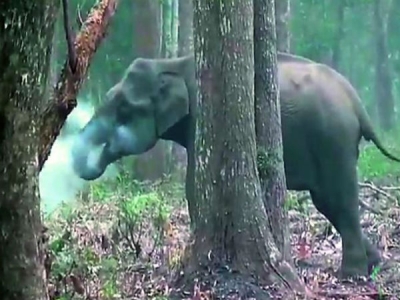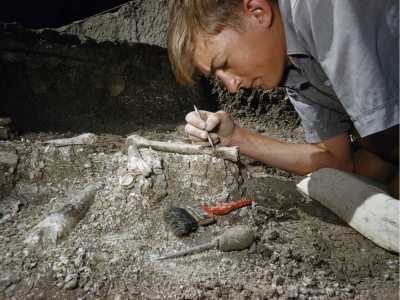
The pudús are the world’s smallest deer. The two species of pudús are the northern pudú from Venezuela, Colombia, Ecuador and Peru, and the southern pudú from southern Chile and south western Argentina. Pudús range in size from 13-17 inches tall, and upto 33 inches long.
Both species of Pudú – Northern and Southern – are native to South America where they inhabit the dense undergrowth of temperate rain forests. Little is known about their lifestyle because they are so secretive. Pudú are the smallest species of deer in the world, with the Northern Pudú being slightly larger than the Southern Pudú. Fawns typically weigh less than three pounds at birth.
A male Southern Pudú fawn born on December 19 at the Los Angeles Zoo has been named “Haechan” after a musician who, according to his fans, resembles the tiny deer species. Little Haechan (the Pudú) is thriving under the care of first-time parents Steph and Mario. The tiny fawn prefers to stay close to Steph and can sometimes be difficult for zoo guests to locate. As he grows, Haechan will gain confidence and spend more time away from mom. Destruction of their rain forest habitat has resulted in both Pudú species being under threat of extinction. Breeding programs like those of the Los Angeles Zoo are critical to gaining understanding of these elusive and endangered creatures. The tiny fawn was born to first-time parents, Steph and Mario. The playful newborn may be difficult for visitors to spot in its habitat. According to keepers, he likes to spend a lot of time tucked away, close to mom.
The Northern Pudú (Pudu mephistophiles) is found in Venezuela, Colombia, Ecuador, and Peru. The Southern Pudú (Pudu puda) is native to southern Chile and southwestern Argentina. As of 2009, the Southern Pudu remains classified as “Near Threatened”, while the Northern Pudu is currently classified as “Vulnerable” on the IUCN Red List. As a member of the Association of Zoos and Aquariums, the Los Angeles Zoo participates in the Species Survival Plan (SSP) for the Southern Pudu, whose population is declining in the wild.
Credit : Zoo Borns
Picture Credit : Google





